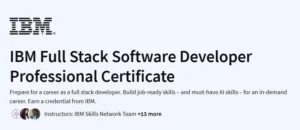What will you learn in Apache Storm Certification Training Course
Grasp the fundamentals of real-time stream processing with Apache Storm.
Architect and deploy Storm clusters using Zookeeper and Nimbus.
Develop spouts and bolts to ingest and process data streams.
Build and optimize topologies, including grouping and parallelism strategies.
Implement windowing, triggers, and stateful computations for complex event processing.
Integrate Storm with Kafka, Cassandra, and other data stores for end-to-end pipelines.
Program Overview
Module 1: Introduction & Environment Setup
⏳ 1 hour
Topics: Overview of real-time analytics, Storm ecosystem, installation of Java, Storm, and Zookeeper.
Hands-on: Set up a local Storm cluster and run the “Word Count” example topology.
Module 2: Storm Architecture & Components
⏳ 1.5 hours
Topics: Nimbus, Supervisors, Workers, Zookeeper coordination, Storm UI.
Hands-on: Explore cluster metrics in Storm UI and scale workers.
Module 3: Spouts and Bolts
⏳ 2 hours
Topics: Defining spouts for data ingestion, implementing bolts for processing, anchoring and acknowledgements.
Hands-on: Write custom spouts/bolts in Java or Python and test locally.
Module 4: Topology Design & Stream Grouping
⏳ 2 hours
Topics: Stream groupings (shuffle, fields, all), parallelism hints, fault tolerance.
Hands-on: Design and deploy a multi-stage topology with different groupings.
Module 5: Windowing & Triggers
⏳ 1.5 hours
Topics: Time-based and count-based windows, sliding vs. tumbling, triggers.
Hands-on: Implement a tumbling window to compute rolling metrics.
Module 6: Stateful Processing
⏳ 1.5 hours
Topics: Maintaining state across tuples, checkpointing, state storage options.
Hands-on: Build a stateful bolt to track running aggregates.
Module 7: Integration with External Systems
⏳ 2 hours
Topics: Connecting Storm to Kafka for ingestion, Cassandra/HBase for storage.
Hands-on: Ingest messages from Kafka and write results to Cassandra tables.
Module 8: Monitoring, Management & Optimization
⏳ 1 hour
Topics: Metrics collection, tuning parallelism, latency vs. throughput trade-offs.
Hands-on: Profile a topology, adjust parallelism, and measure performance improvements.
Module 9: Real-World Use Case & Capstone Project
⏳ 2 hours
Topics: End-to-end real-time analytics pipeline for log processing or clickstream analysis.
Hands-on: Deliver a complete Storm application that ingests, processes, and stores streaming data.
Get certificate
Job Outlook
Real-time data engineers and streaming specialists are in high demand in finance, e-commerce, and IoT.
Roles include Big Data Engineer, Stream Processing Engineer, and Real-Time Analytics Developer.
Salaries typically range from $110K–$150K USD, with premium for cloud-native streaming expertise.
Storm skills complement Kafka, Spark Streaming, and Flink knowledge for a competitive edge.
Explore More Learning Paths
Expand your knowledge in real-time data processing and big data analytics with these related courses and resources. These learning paths will help you build expertise in distributed systems and scalable data pipelines.
Related Courses
Apache Spark and Scala Certification Training
Gain skills in processing large datasets efficiently using Apache Spark and Scala for advanced analytics.Apache Kafka Certification Training
Learn to manage real-time data streams and create robust, scalable data pipelines for modern applications.Apache Cassandra Certification Training
Understand distributed database management and techniques for storing and retrieving high-volume structured data.
Related Reading
What Is Data Management
Discover best practices for organizing, storing, and maintaining data effectively to support analytics and decision-making.
Specification: Apache Storm Certification Training Course
|
FAQs
- Basic understanding of Java or Python programming is recommended.
- Familiarity with distributed systems or Hadoop is helpful but not mandatory.
- The course introduces Storm setup, spouts, bolts, and topologies from scratch.
- Hands-on labs guide learners through cluster setup and processing.
- Prior exposure to Kafka or Cassandra is advantageous but optional.
- Yes, you’ll create end-to-end real-time pipelines using Storm.
- Includes log processing, clickstream analysis, and metric computation examples.
- Integration with Kafka and Cassandra allows realistic production simulations.
- Hands-on labs cover windowing, triggers, and stateful computations.
- The capstone project demonstrates a fully functional streaming application.
- Storm excels in low-latency, high-throughput event processing.
- Spark Streaming focuses on micro-batch processing, while Storm is true stream.
- Flink provides both batch and stream capabilities; Storm is specialized for streaming.
- Understanding Storm strengthens overall streaming architecture knowledge.
- Integration skills with Kafka and other tools are transferable across frameworks.
- Covers cluster setup with Nimbus, Supervisors, and Zookeeper.
- Introduces parallelism hints, stream grouping, and fault tolerance strategies.
- Explains metrics collection and latency/throughput trade-offs.
- Hands-on labs include topology profiling and performance tuning.
- Focus is on beginner-to-intermediate optimization; advanced enterprise tuning is not included.
- Big Data Engineer or Stream Processing Engineer roles.
- Real-Time Analytics Developer positions in finance, e-commerce, and IoT.
- Skills complement Kafka, Spark Streaming, and Flink for competitive advantage.
- High demand for engineers proficient in scalable real-time pipelines.
- Salaries typically range between $110K–$150K USD, with premium for cloud-native expertise.





